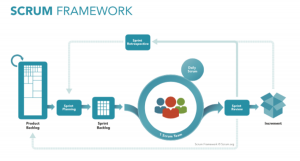— April 9, 2019
Most people think coming up with new product ideas is meant for only a select few. You have to be a visionary, a genius or special in some way. This thinking is counterproductive to most people. In reality, just about anyone can come up with new product ideas.
There is a simple and scalable process for new product ideation called Systematic Product Ideation.
In the most basic way possible, new product ideation fits in to one of two categories: problem solving or growth.
You may be trying to solve a discreet and identifiable problem. An easy example is a seatbelt, helmet or most safety equipment. Or, you may be coming up with a new feature or use that did not exist before. A simple example is a smart phone or 90% of the technology you use on a consistent basis.
There are really only two ways you can come up with new product ideas, too. You either do it on purpose or you do it by accident. Another way to think of this is you come up with ideas either by feeling or by thinking.
There are only 4 real categories of ideation:
- On Purpose and Thinking
- On Purpose and Feeling
- Accidental and Thinking
- Accidental and Feeling
Your brain has two main modes of thought: focus and diffuse thinking. When you are actively trying to solve a problem, read a book, learn something new, engage with a new person, you are more than likely using the focus mode of thinking. Thoughts are linear and connected. This thought method is perfect for deliberate ideation.
Deliberate Ideation
When you start out on an effort to create new product ideas, you can choose to focus deliberately and guide yourself through a number of questions:
- What do our customers complain about?
- What do our customers ask for?
- What isn’t working in our product today?
- What are customers using our product for that we did not intend?
- What other products are our customers using with our product?
- What are the physical limits of our product?
In this way, you are using the thought process called focused thinking. This is straight forward and obvious. You can also follow another set of 12, detailed questions to get your team thinking.
Accidental Ideation
But what about the other method, diffuse thinking? Diffuse thinking is where your mind and thought process wanders. Your thoughts are not necessarily connected and often non-linear. This happens frequently when you are engaged in a repetitive, low cognitive load task. Where does your mind go when you are doing the dishes or running? What do you think about on long, silent walks? Your mind can shift in and out of diffuse thinking just before sleep, as well.
You can prime your mind for diffuse thinking. Many great minds have used diffuse thinking to expand their thought process and come up with new ideas.
Salvador Dali was known for using a technique to open his mind to diffuse thinking. He would use focused thinking when looking for new ideas for his art. Then he would become tired and sit in a chair while holding a key. His mind would slowly shift to diffuse thinking and drift to sleep. As he fell asleep the key in his hand would fall to the floor instantly waking him and taking him out of diffuse thinking and back into focused thinking. He used this exact technique to come up with one of his more famous pieces of work—“The Persistence of Memory”.
So, what does this have to do with product ideation?
You can use either thought process to come up with problems to solve or areas of growth for your products and customers. Choose the right process for the situation at hand. Focused, deliberate discussion and thinking has its place in ideation. But do not forget to let your mind—or your team’s mind—wander while focused on other tasks.
Or just grab a key and take a nap. That works just fine, too.
Originally published here.
Business & Finance Articles on Business 2 Community
(29)




